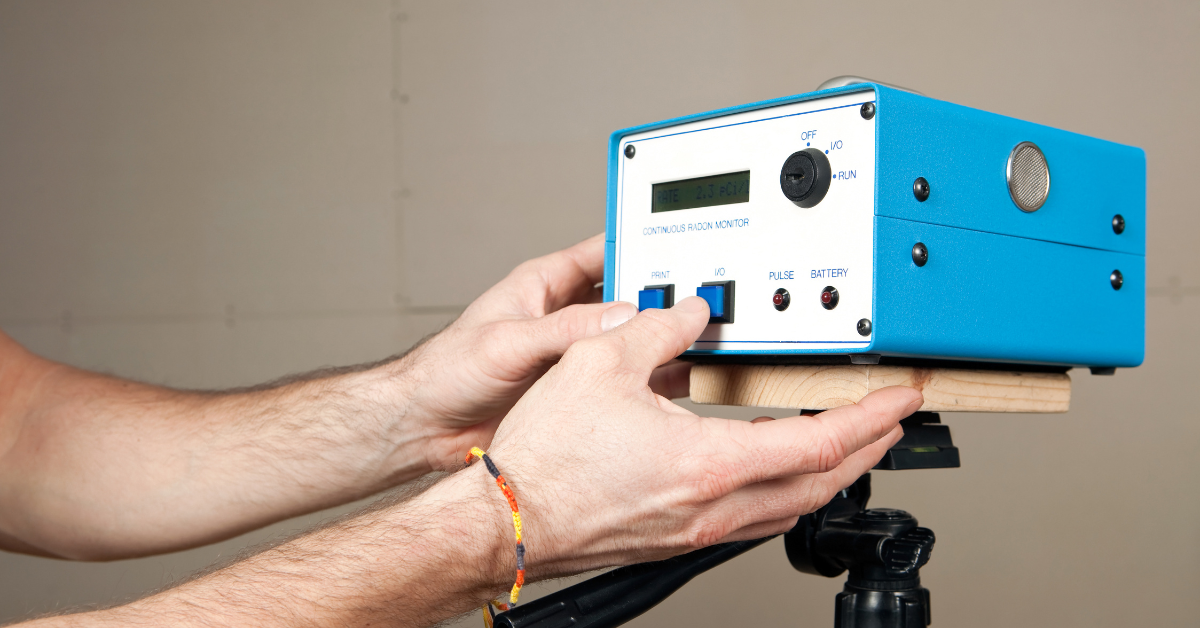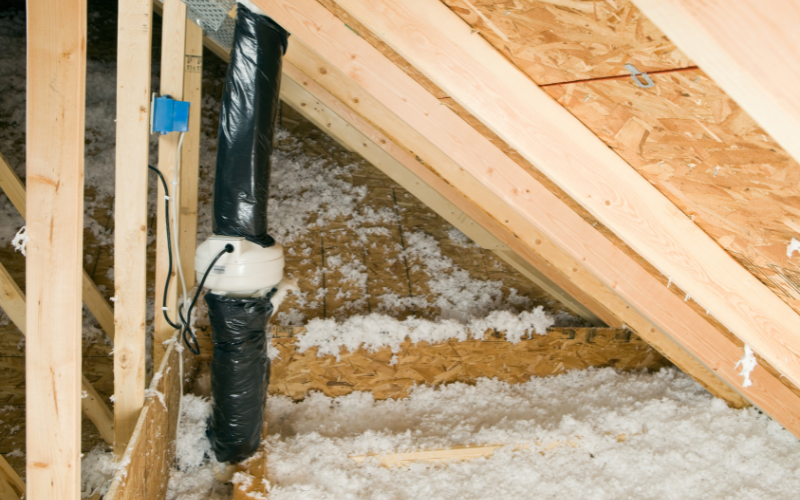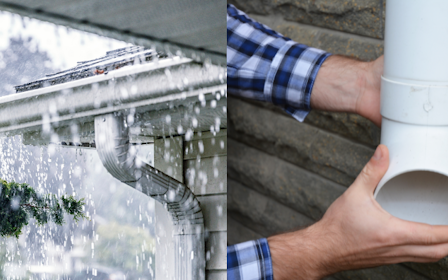Radon is a colorless, odorless, radioactive gas that may be lurking in your home without you knowing it. While radon naturally occurs, it can be dangerous when it builds up indoors. In fact, after smoking, radon is the second leading cause of lung cancer in the United States1.
Understandably, the presence of radon can be a serious concern for homeowners. However, with the right approach, you can mitigate and control the level of this gas in your home, even in high-risk areas around the country.
In this article, we’ll break down everything you need to know about radon, from its health risks to how to test for it in your home and mitigate its presence if necessary.
Definition of Radon
Radon is a naturally occurring radioactive gas that forms when uranium, thorium, and radium break down and seep into rocks, soil, and groundwater. As these elements decay, they release radon into the air, which can then seep into buildings through cracks in foundations, walls, or floors. Radon is invisible and odorless, making it particularly tricky to detect without specific methods.
Though radon is a natural part of the Earth's atmosphere, it becomes dangerous when it accumulates in indoor spaces, especially at high concentrations. Since it is heavier than air, radon tends to settle in lower levels of buildings, such as basements or crawl spaces. However, if a home isn’t ventilated properly, it can also rise through the space and affect the upper levels.
The primary concern with radon isn’t its mere presence, but rather long-term exposure, which can increase your risk of developing serious health issues.
What Are the Health Effects of Exposure?
Radon exposure is harmful because of the radioactive particles the gas emits. When inhaled, these particles can damage your lungs and lead to potential long-term health risks if exposure is prolonged.
According to the Centers for Disease Control and Prevention (CDC), radon is responsible for about 21,000 lung cancer deaths annually in the United States2.
The risk of developing cancer from radon exposure depends on several factors, including the concentration of the gas in the home and the duration of exposure.
People who smoke or who have smoked in the past are at higher risk.
It’s important to note that the health risks associated with radon are cumulative. While a single exposure may not cause noticeable harm, continuous exposure over many years increases the likelihood of developing serious health issues.
Common Sources of Radon in Homes
The presence of radon in homes is mainly linked to the underlying geology of the area where the house sits. However, certain environmental factors can contribute to higher concentrations. Here are some common causes.
- Uranium-rich soil: If a home is built on uranium-rich soil and bedrock, radon can be released beneath the house. Areas with large quantities of granite, shale, or limestone have a higher likelihood of emissions.
- Cracked foundations: Radon can seep into your home through cracks in the foundation, gaps around pipes, or openings within walls. These cracks and openings are particularly common in older homes or those with unsealed foundations.
- Well water: Radon can also be present in well water. If homeowners use contaminated water for cooking or drinking, it can be released into the air when heated or sprayed.
- Ventilation issues: Newer homes with limited ventilation and those tightly sealed to conserve energy can inadvertently trap radon inside.
While you can find radon in homes nationwide, certain regions are known for higher levels due to geological conditions. For example, the northeast and midwest tend to have higher concentrations.
 How To Test For Radon in Your Home
How To Test For Radon in Your Home
Testing for radon is the only way to know if it’s present in your home. There are short-term and long-term testing methods. Both methods can be effective depending on your needs and how quickly you want results.
Short-Term Testing
Short-term testing provides a snapshot of your home’s radon levels. You can purchase radon test kits from a local hardware store or online, and they typically take between 2 and 7 days to complete. There are two main types of short-term radon detectors:
- Charcoal canisters: These specialized canisters absorb radon throughout the test and are the most common form of testing. After the test period, you send the canister to a testing lab for analysis.
- Electret Ion Chambers (EIC): These tests measure the ionization in the air caused by radon particles. They are less common than charcoal canisters. Professionals typically deploy these devices.
Short-term testing is quick and gives you an initial reading of the radon levels in your home. However, because these tests measure levels of the gas at a particular point in time, they can be influenced by external factors such as weather or the time of year. For the most accurate results, you should test the lowest livable area of your home, such as the basement or a ground-floor room.
Long-Term Testing
Long-term tests measure the radon levels in your home over a longer period—typically 90 days or more. This method provides a more reliable indication of your home’s average radon level because it accounts for seasonal and weather-related fluctuations. Long-term tests are more accurate for determining if you need mitigation.
Some homeowners elect to perform long-term testing after receiving results from a short-term test. If your short-term test reported low or elevated levels of radon, it may be a good idea to conduct an extended test to see your home’s average radon level.
Hiring a Professional
If you’d prefer not to handle testing yourself, you can hire a certified professional to conduct the test for you. A certified professional will know how to place the testing equipment properly and interpret the results.
Testing professionals are also useful for mitigation and post-mitigation verification. These professionals will be able to suggest mitigation methods and confirm that radon levels have been reduced to a safe range after you’ve installed a mitigation system.
 How To Mitigate Radon Exposure
How To Mitigate Radon Exposure
If you discover high radon levels in your home, you must take immediate action. There are several effective methods you can follow to reduce radon concentrations in your home. These strategies range from ventilation improvements to the installation of specialized mitigation systems.
Depressurization Systems
The most common method for mitigation is called a sub-slab depressurization system (SSD). This system uses a fan and piping to draw radon gas from beneath a home’s foundation and vent it outside. The system’s fan also creates a vacuum that helps prevent large concentrations of radon from seeping into the home.
This type of system is particularly effective in homes with basements or crawl spaces. In some cases, a mitigation system can reduce radon levels by up to 99%3.
Passive Reduction Methods
If your home has a lower concentration of radon, you may be able to use passive reduction methods to reduce levels.
- Increasing ventilation: Depending on your home’s floor plan and the level of radon you’re experiencing, installing additional ventilation or opening windows could help you lower the concentration.
- Sealing foundation: Sealing cracks and gaps in your home’s foundation is a relatively simple way to help reduce radon entry. While this method alone is rarely sufficient to bring levels to a safe range, you can use it in conjunction with other mitigation efforts, such as installing a depressurization system.
Mitigation System Upkeep
Once you install a radon mitigation system in your home, maintaining it is crucial for your continued safety. You should inspect the ventilation fan and piping system regularly to ensure it’s working efficiently.
Some systems also have monitoring devices that allow you to track radon levels in real time. If levels begin to rise at any point, it may be time to inspect the system and consider additional mitigation measures.
Lowering Your Risk and Finding Your Dream Home
While radon may not be something you think about daily, it’s important to be aware of its potential risks and take steps to protect your health. Regular testing and, if necessary, mitigation, can dramatically reduce the dangers posed by radon. If you discover high levels in your home, don’t panic. There are several effective and proven methods you can deploy to address residential radon. By being proactive, you can ensure that your home remains safe and healthy for years to come.
If you’re searching for your dream home, use our Find Your Home feature to locate well-designed, safe new construction properties in your area.
Testing FAQ
How much do radon mitigation systems cost?
According to the National Radon Defense, radon mitigation systems typically cost homeowners between $800 and $2,5004, depending on the size and layout of their homes.
Is it okay to live in a house with radon?
Individuals who experience prolonged radon exposure (especially high levels) are at an increased risk of developing severe health complications, such as lung cancer. The U.S. Environmental Protection Agency recommends homeowners mitigate radon concentrations above 4 pCi/L5.



